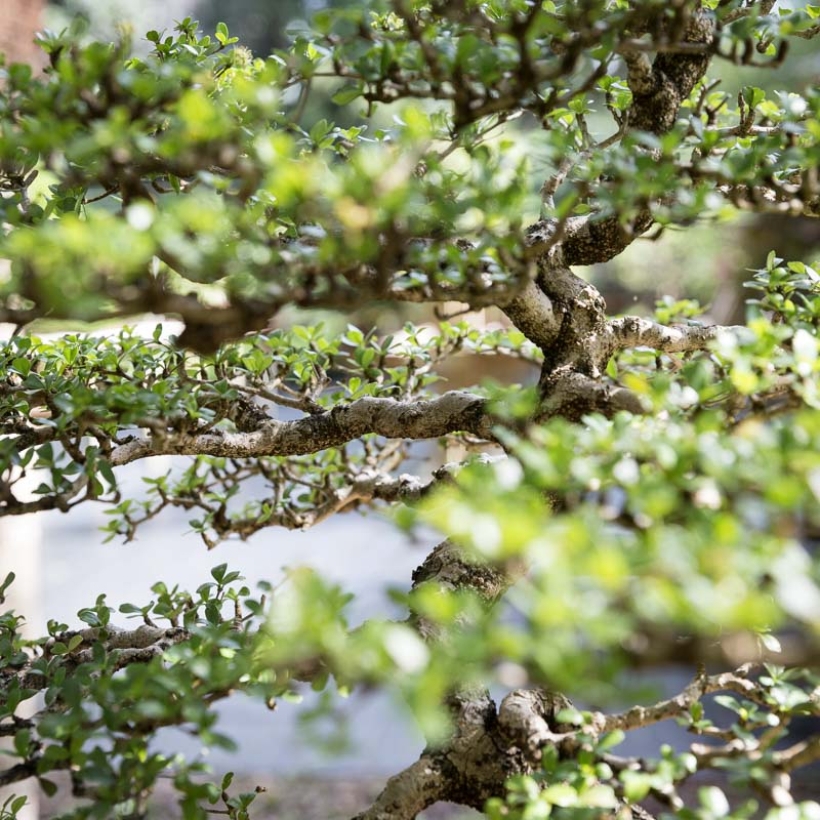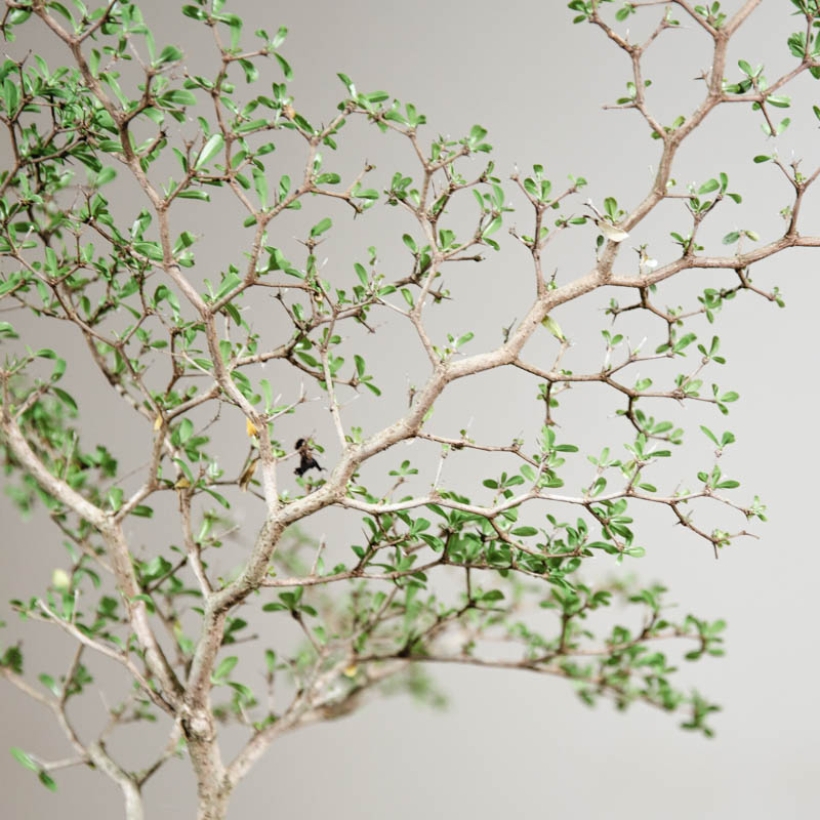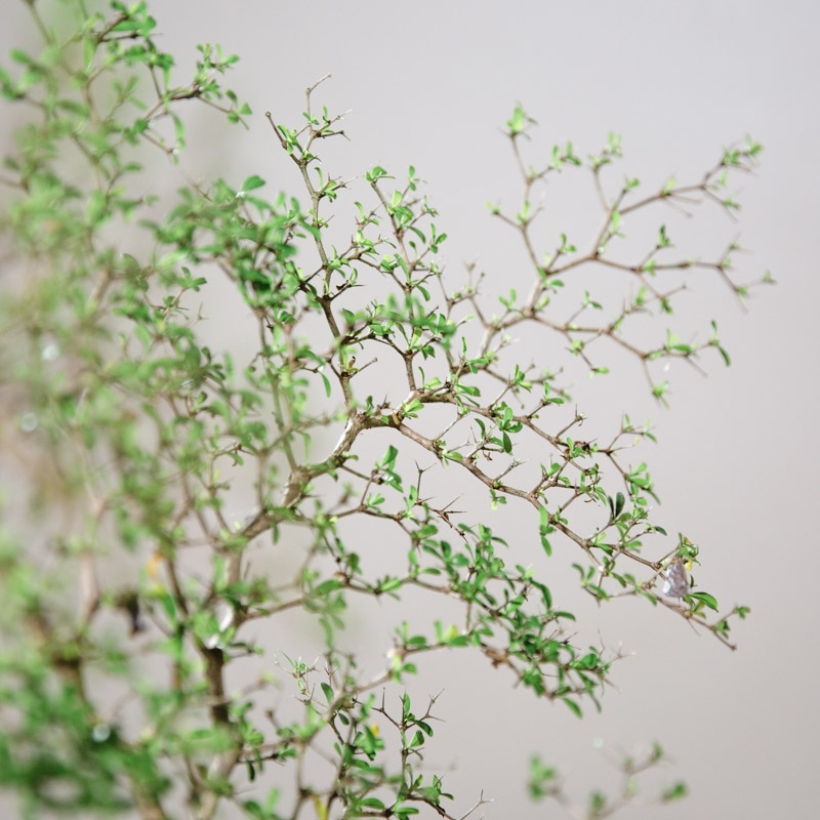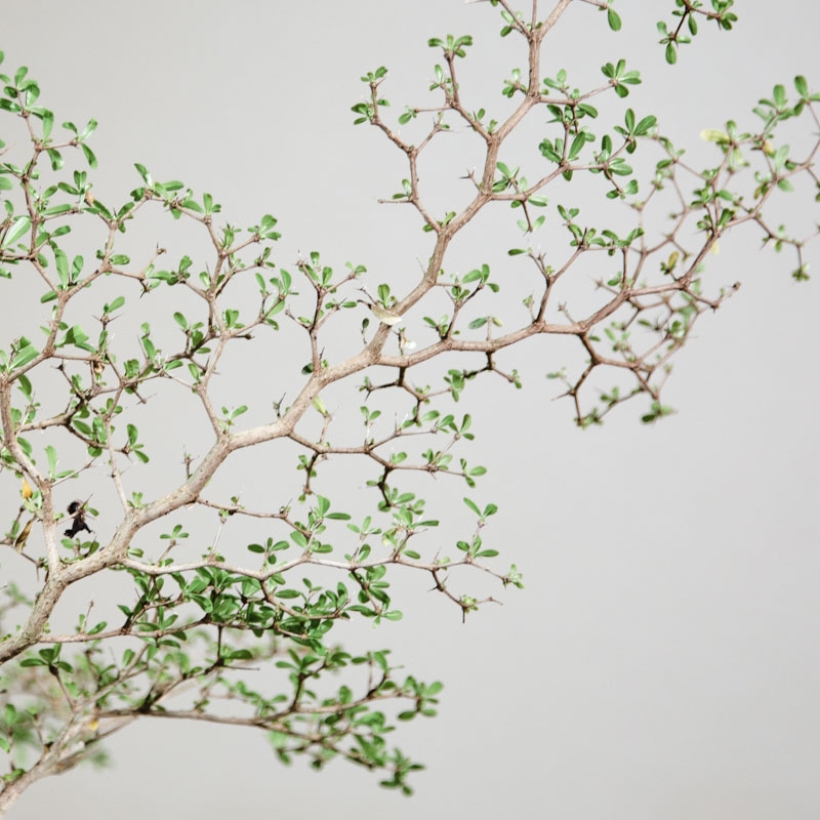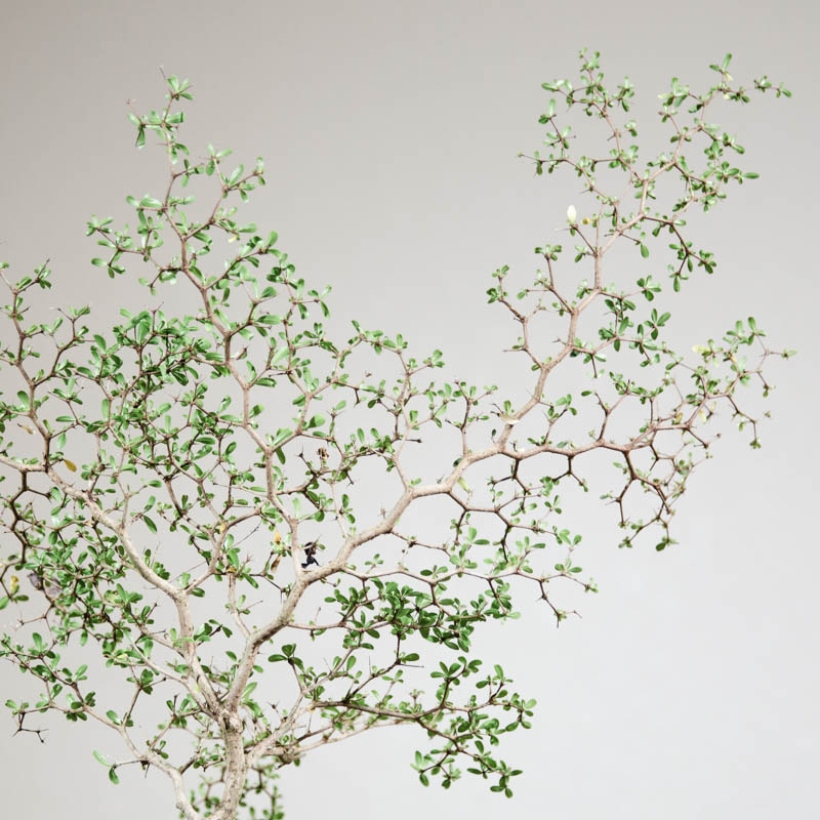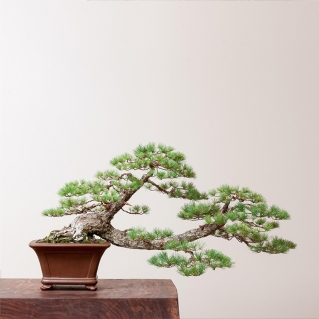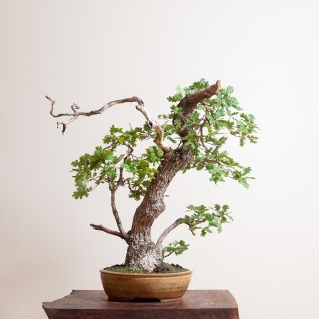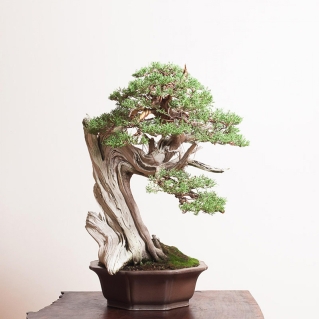Dwarf Black Olive Bonsai
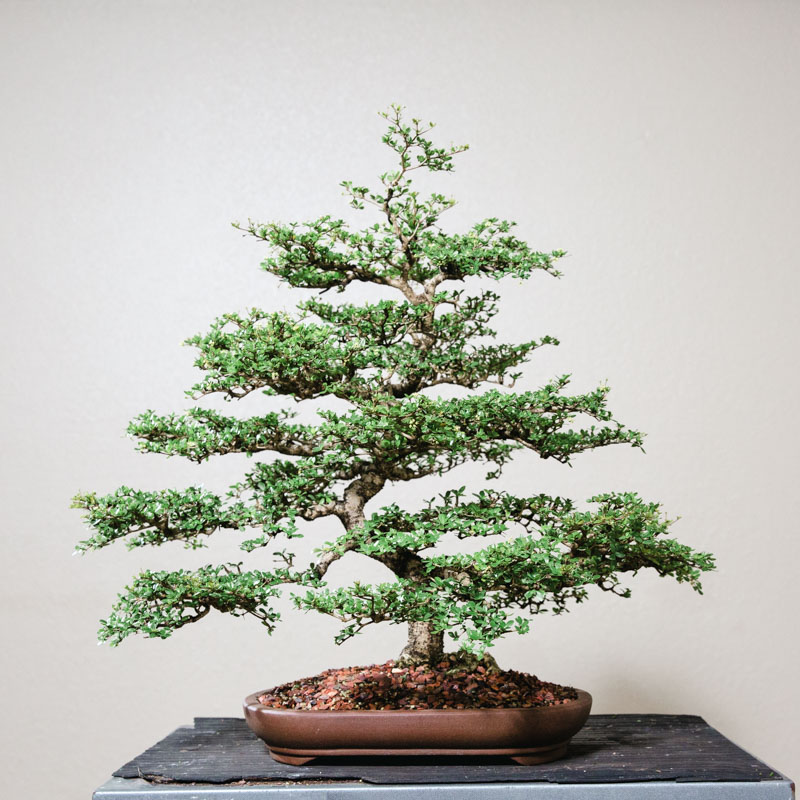
General Information
Dwarf black olive bonsai —Bucida Spinosa— is a tropical broadleaf evergreen. It is native to the tropical regions of Cuba, the Bahamas, and some parts of Florida. The tree is common and highly treasured throughout island nations.
Although this incredibly popular tree is an olive tree, it doesn't produce olives.
Dwarf black olive bonsai trees grow in a unique, zigzag pattern and in nature can reach heights up to 40-50 feet tall. The branches of this fascinating tree come out in an almost cantilever style, with a whorl of very tiny leaves and even tinier yellow flowers.
From a side-to-side or front-to-back perspective, the dwarf black olive bonsai’s branches resemble flat plains across the tree. But when you look up or down at the tree, you will see the natural zigzagging pattern.
The dwarf black olive bonsai is unique in that it is a broadleaf tropical evergreen tree. However, although it is an evergreen, it is also briefly deciduous. For two to three weeks each year, the tree drops its leaves while it grows new ones, giving it the classification of a deciduous evergreen.
The dwarf black olive bonsai is a popular tree for both beginners and established bonsai artists.

Caring for Dwarf Black Olive Bonsai
Watering
Dwarf black olive bonsai trees like well-draining soil.
A younger tree will use somewhat less water. Since it doesn't have a lot of leaves, its rate of transpiration is minimal.
However, the older the tree gets, the more water it requires due to the number of leaves that it will have.
The soil of a dwarf black olive bonsai tree must be well-draining, and should never be allowed to dry out.
Always water evenly across the pot. Having good water spread throughout the pot will help grow a strong base of fine feeder roots.
Sun Exposure
Lighting is an important component of dwarf black olive bonsai care.
Full sun is the best lighting for dwarf black olive bonsai trees. However, you may need to reduce light in the afternoon.
The leaves of the dwarf black olive bonsai don't wilt until they're dangerously low on water. And since they're so small, it's hard to notice they’ve begun to wilt. For this reason, you may need to water your tree twice a day in hot weather.
Alternatively, you may water your tree in the morning, then shade it in the afternoon.
Otherwise, give your tree as much full sun as possible.
Temperature
Dwarf black olive bonsai trees prefer warm days with temperatures that are consistently above 70℉ at night.
They need to be protected from cold temperatures and should always be kept above 45-50℉.
Fertilizing
You may use liquid bonsai fertilizer every two weeks from spring to autumn.
Avoid fertilizing for three months after repotting.
Your dwarf black olive bonsai tree may also benefit from the addition of pulverized organic fertilizer in mid-spring.
Pruning
Dwarf black olive tree bonsai are slow growers, so you won’t see a dramatic amount of change.
Pruning the dwarf black olive bonsai involves using a combination of pruning styles to create a softly ramified tree.
You can prune the branches to have secondary tertiary and branches rising over a primary branch—like a very structured pad.
Allow a young tree to grow and thicken at the base. Once the base is the desired size, you may begin to prune the top. Cut the branches back, so you have a small amount of growth remaining, and begin developing out from there.
If your dwarf black olive tree bonsai tree is in the second stage of growth, allow the branches to elongate as you did the trunk, to develop the desired thickness. You'll then cut it back as far as the taper or desired length.
You will only need to prune a mature dwarf black olive bonsai tree once a year, for fine-tuning. Avoid making any wildly major cuts, focusing instead on refinement.
Dwarf black olive bonsai will get water shoots, and you will need to prune them as they appear.
Scars on the dwarf black olive bonsai tree can be difficult to heal, so be sure to use extreme care in pruning.
Wiring
You will want to wire out the dwarf black olive bonsai’s branches in its earlier stages of growth.
Doing this will allow you to manipulate the branches and set them up as you want them to grow.
Guy wires and similar wiring techniques aren't strong enough for dwarf black olive bonsai. Instead, you need to wire the tree in from its primary secondaries, then clip and grow from there.
Dwarf black olive bonsai trees train well, and when wired properly, will produce a wonderfully dramatic tree.
Repotting
Dwarf black olive bonsai do not require frequent repotting.
You will only need to repot when your tree loses percolation, or if you have a rotting issue.
Your dwarf black olive bonsai tree should not be put in a bonsai pot until the tree shows a secondary branch structure. Repotting before this will only serve to hinder growth on this already slow-developing tree.
Propagation
Dwarf black olive bonsai trees are best propagated from seed.
This may be done by putting a tray with organic soil underneath the branches of a flowering black olive tree. When the flowers go to seed, they will:
● Fall naturally from the tree
● Land on the organic matter you have placed underneath it; and
● Sprout
Propagation from cuttings or air layers is incredibly difficult.
Pests/Disease
Pests and disease issues on the dwarf black olive bonsai are usually the result of the conditions the tree is growing in.
If the soil is over-saturated for the age of the tree, it may cause the trunk or roots to rot or become moldy.
Dwarf black olive bonsai trees may get aphids. The aphids themselves don't generally do a dramatic amount of damage. However, the surface conditions and waste (honeydew) aphids leave behind may cause problems.
Dwarf Black Olive Bonsai FAQS
Since they are difficult to propagate, dwarf black olive bonsai trees may be challenging to find.
If you live in an island region, however, you will probably find the trees easy to attain.
However, if you do find dwarf black olive bonsai trees, be prepared for them to be expensive, due to their scarcity.
Since dwarf black olive bonsai trees grow very slowly, people often wonder how much heavy pruning can be performed on their trees.
If your tree is mature and healthy, and you leave some growth when you prune, your tree should do fine with fairly heavy pruning
The dwarf black olive bonsai loves full sun and can thrive indoors or outside.
A combination of both can be effective—outdoors in the summer and inside during the winter months.
It may also be grown in a cold, frost-free greenhouse.

